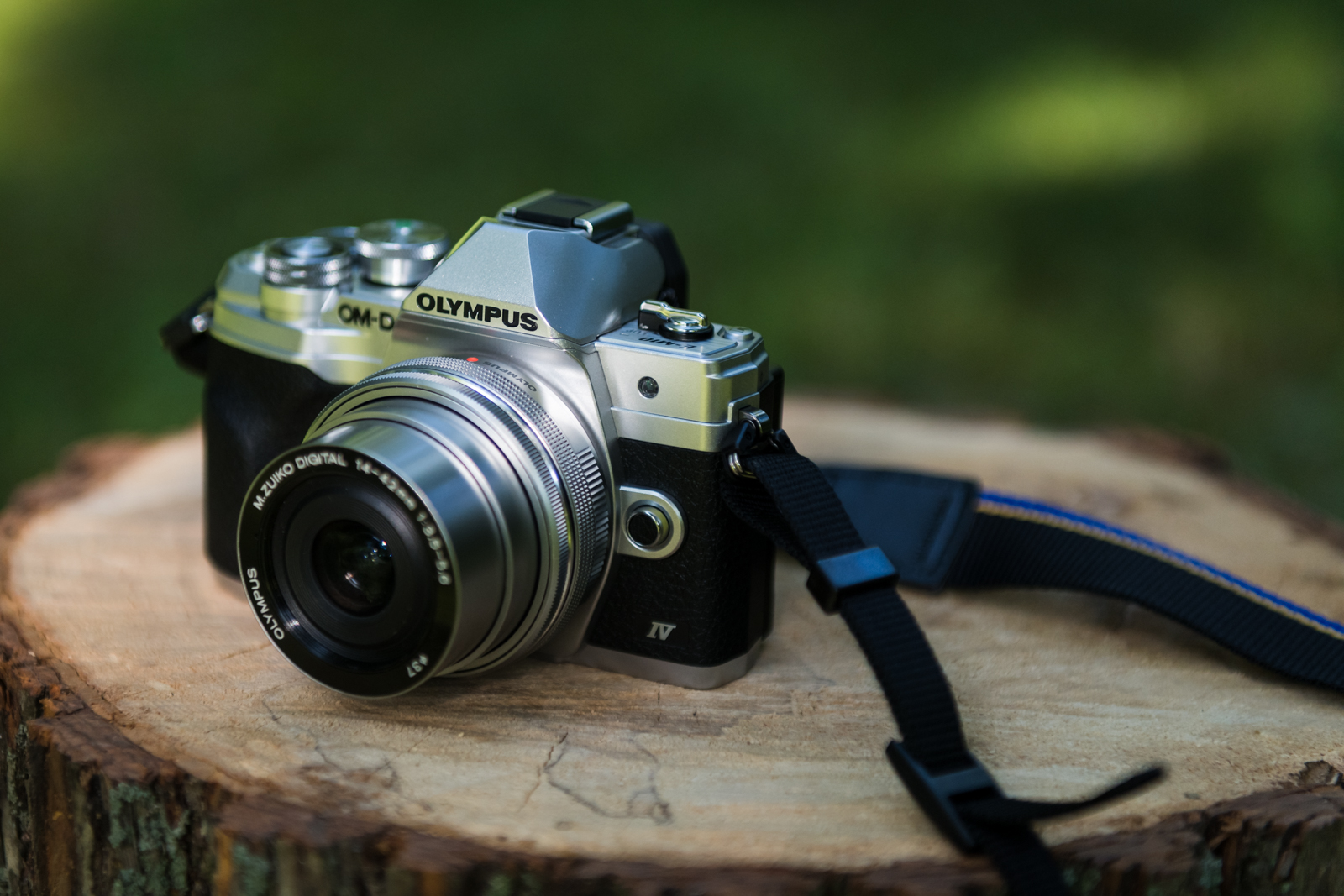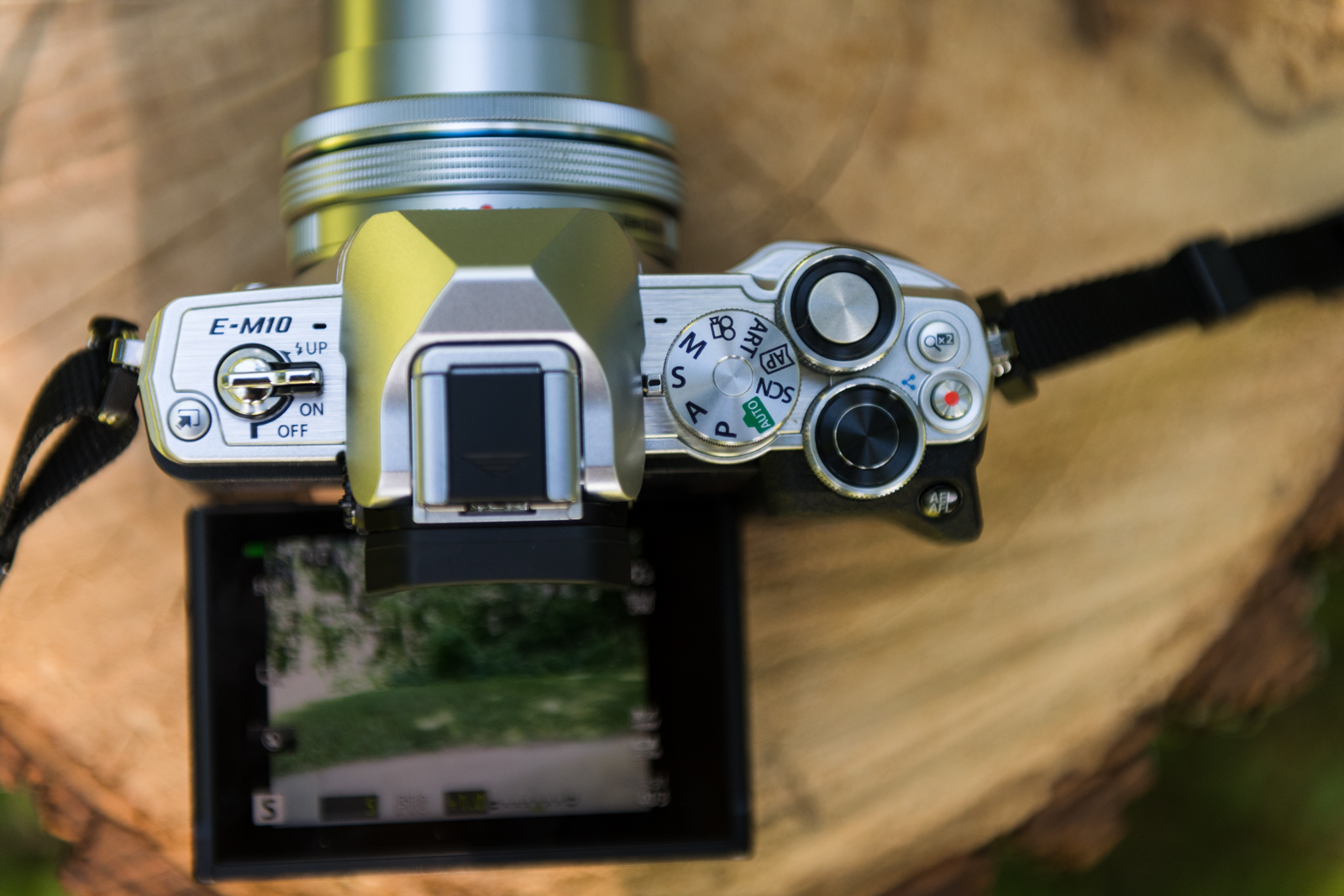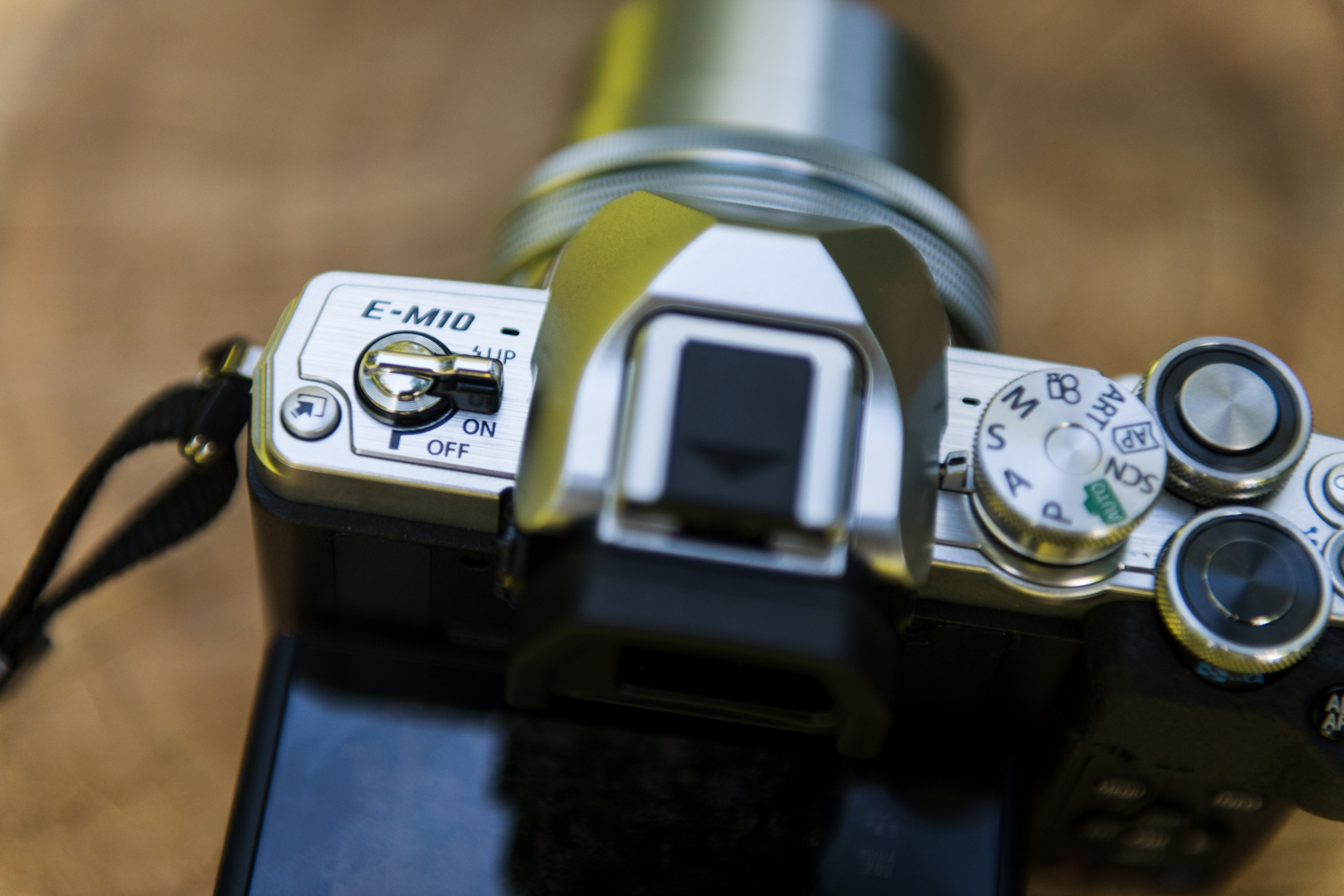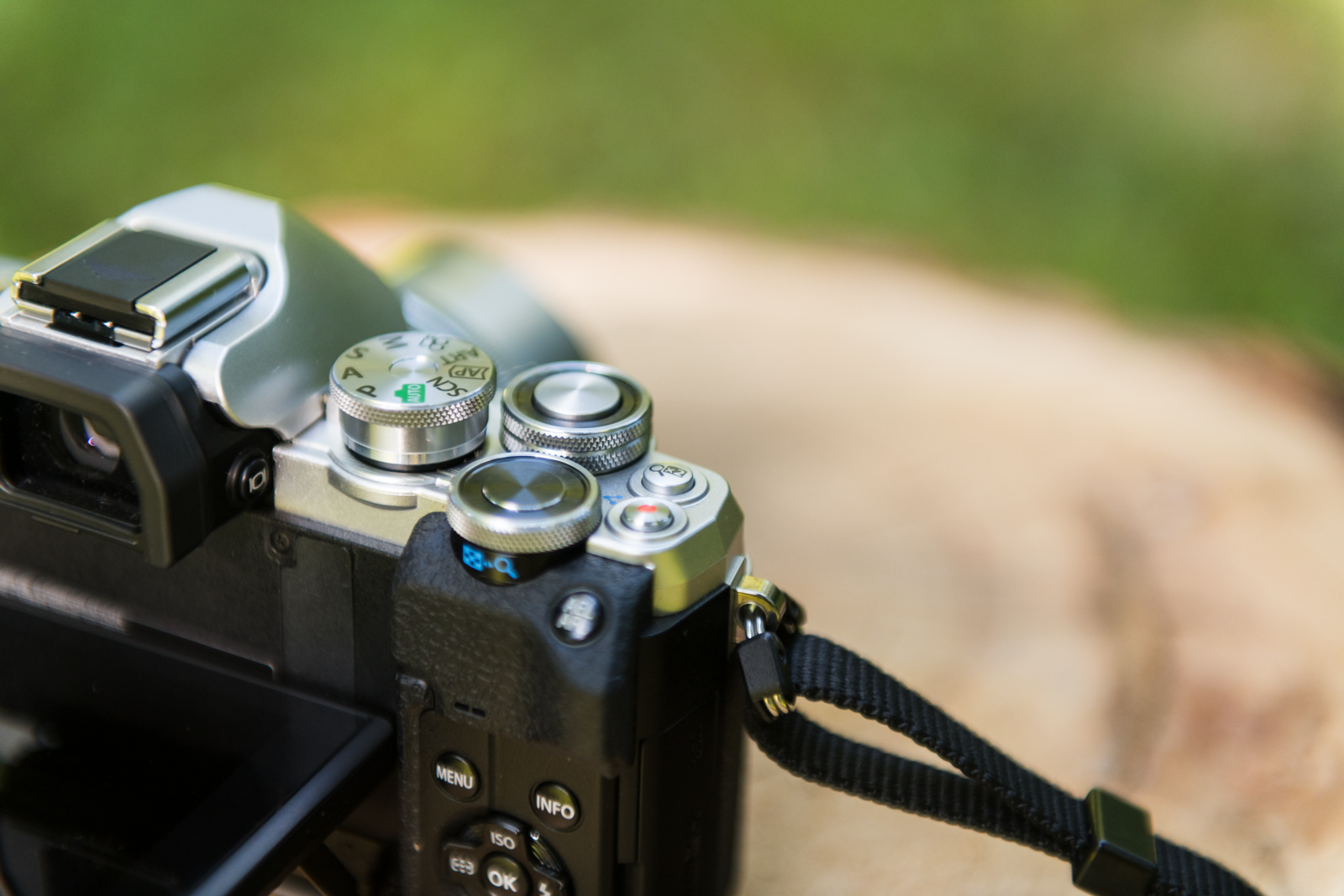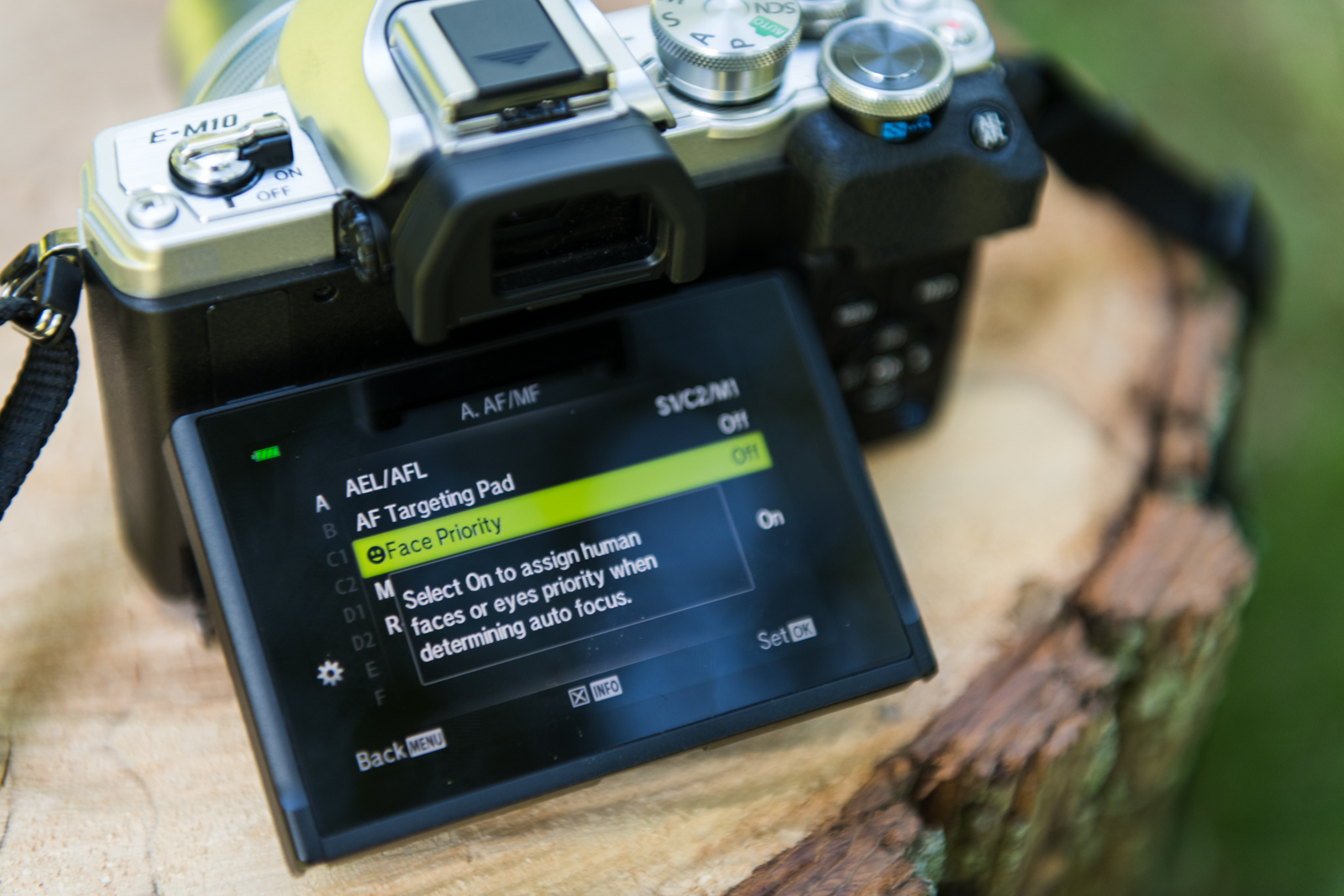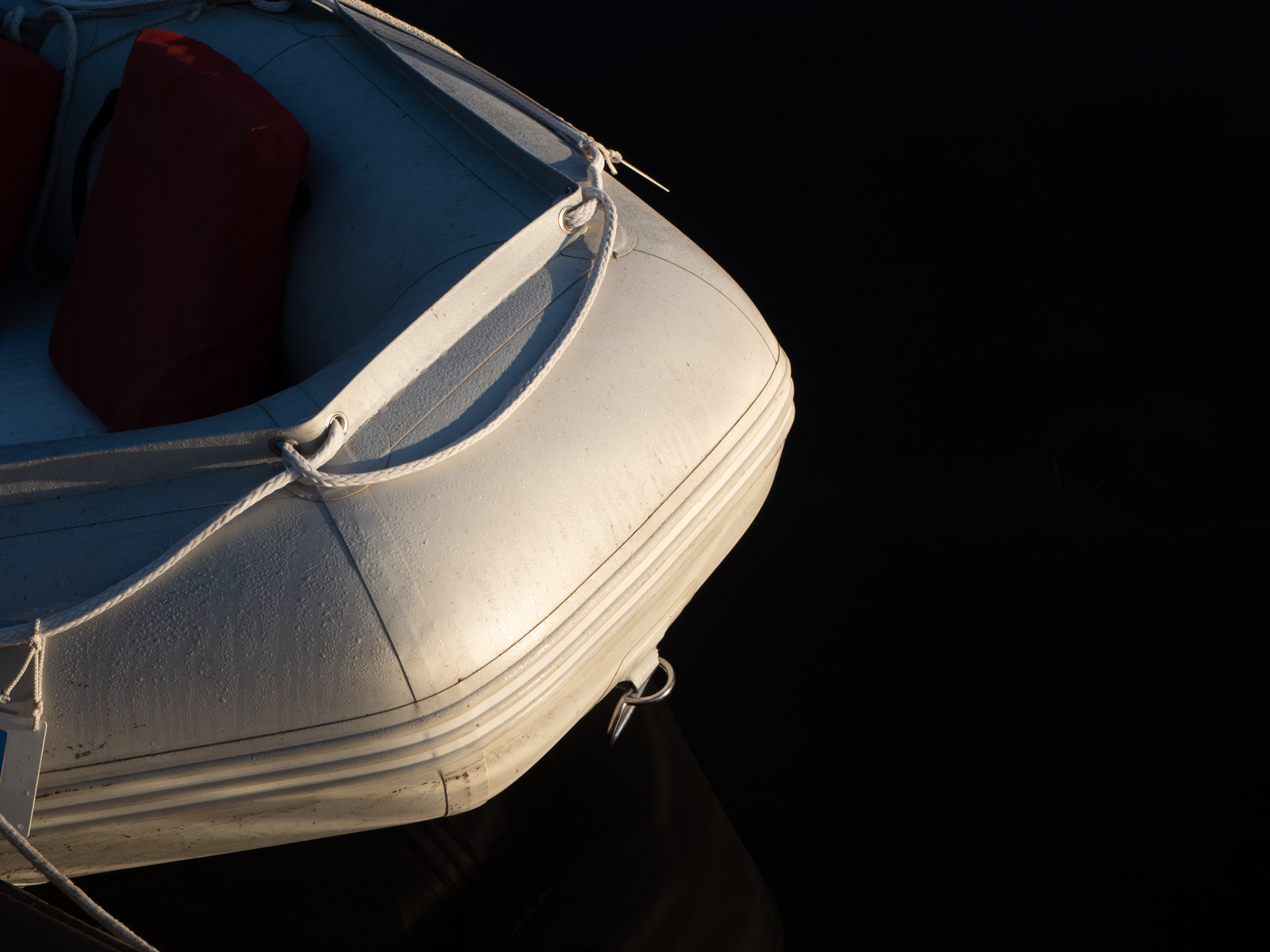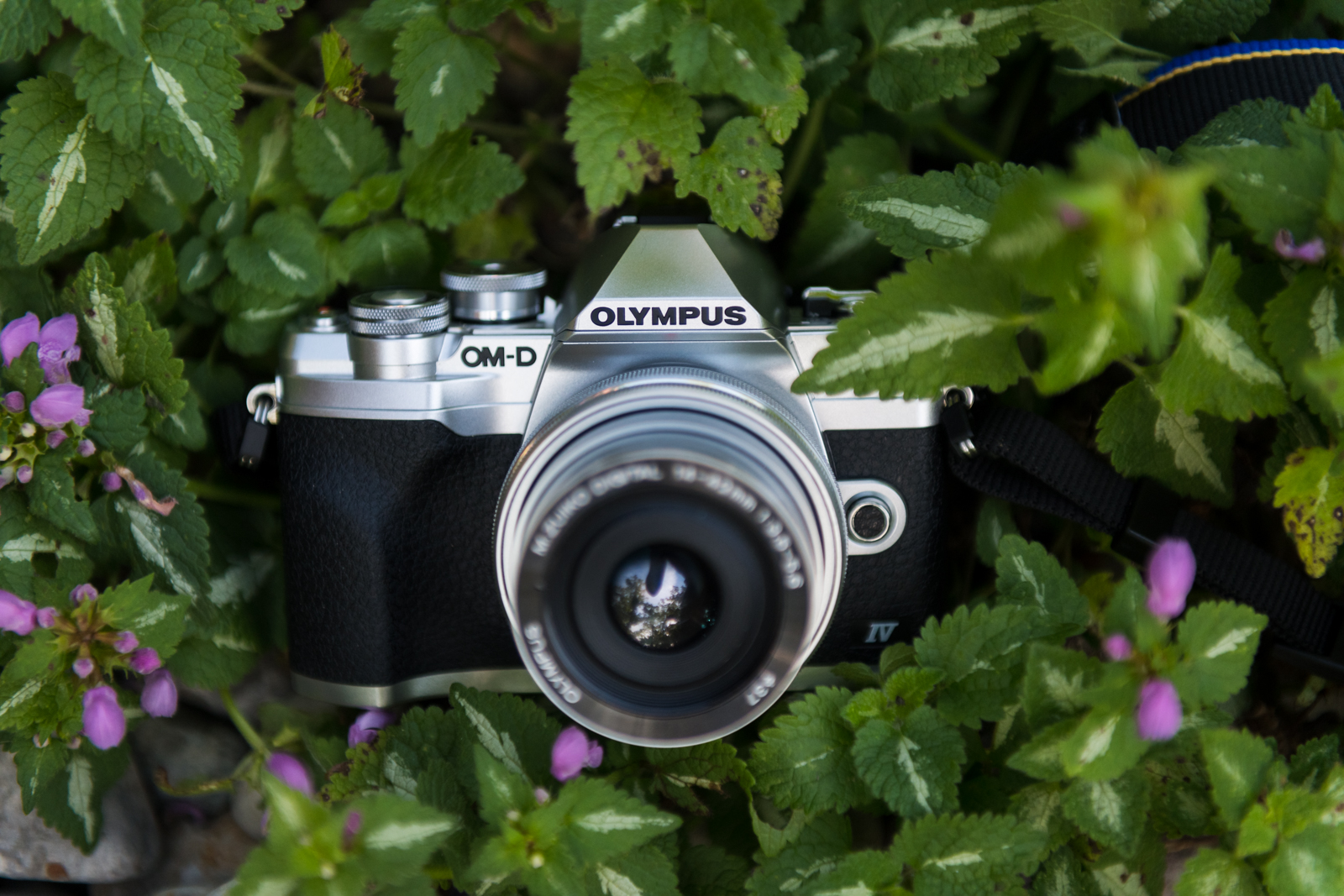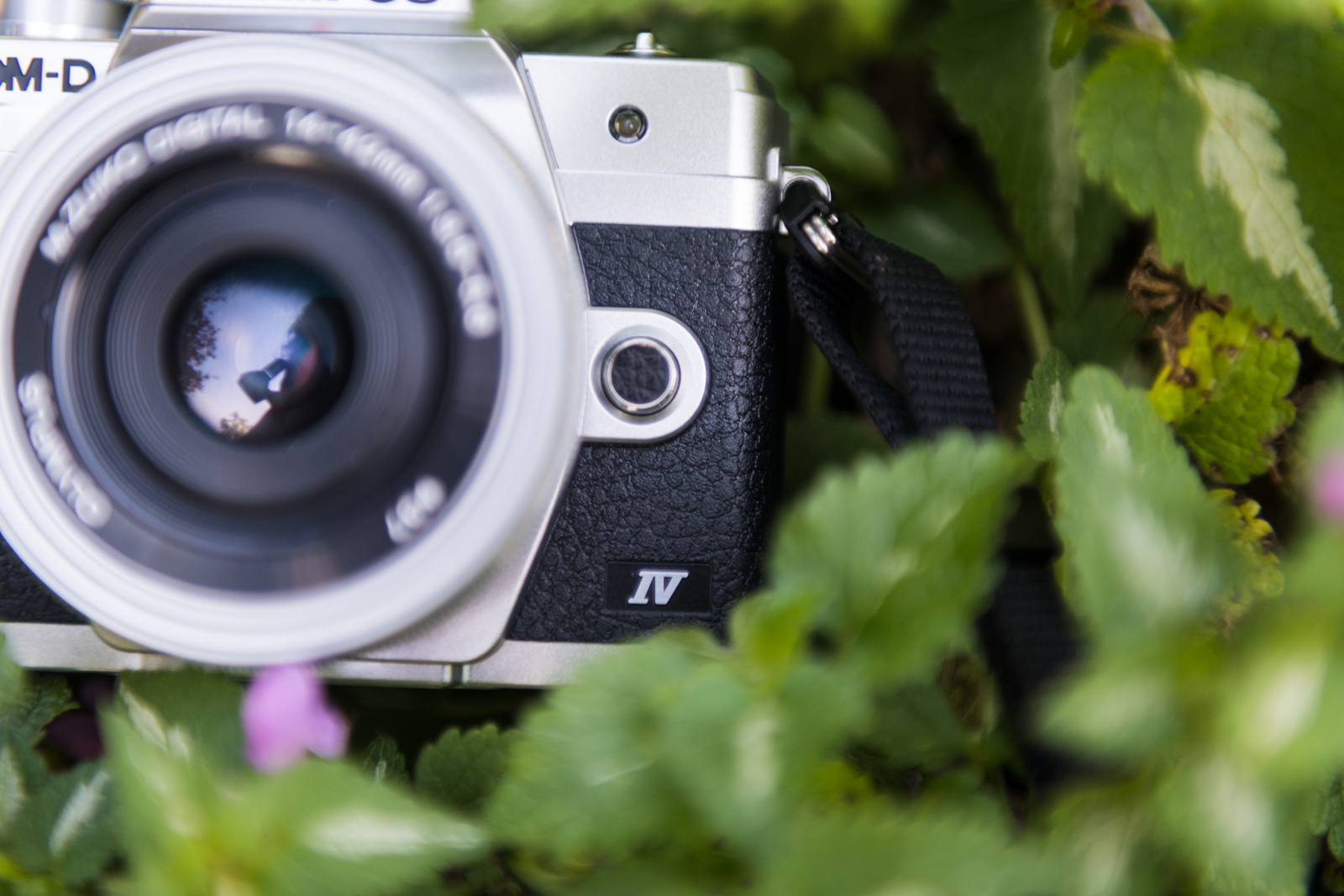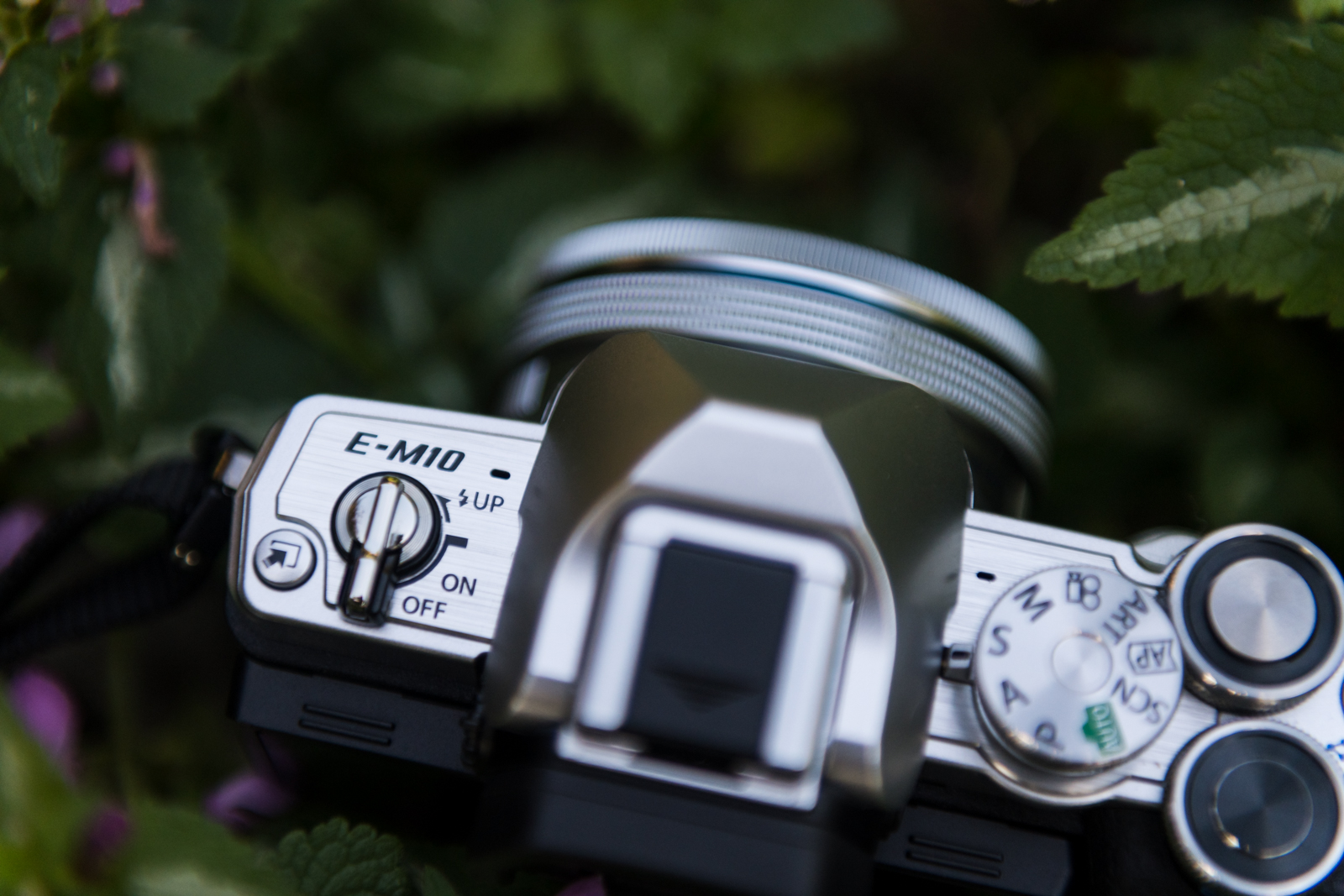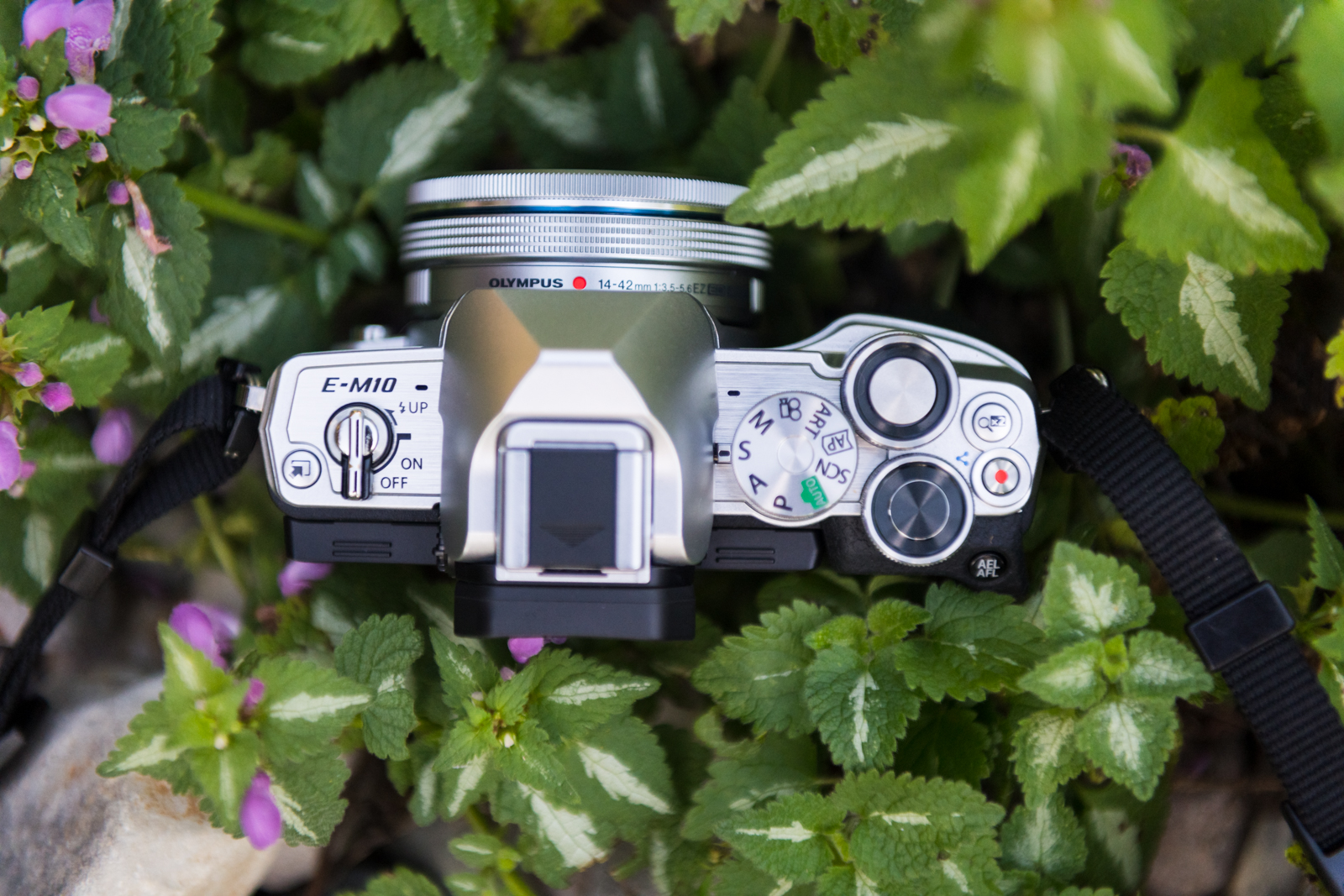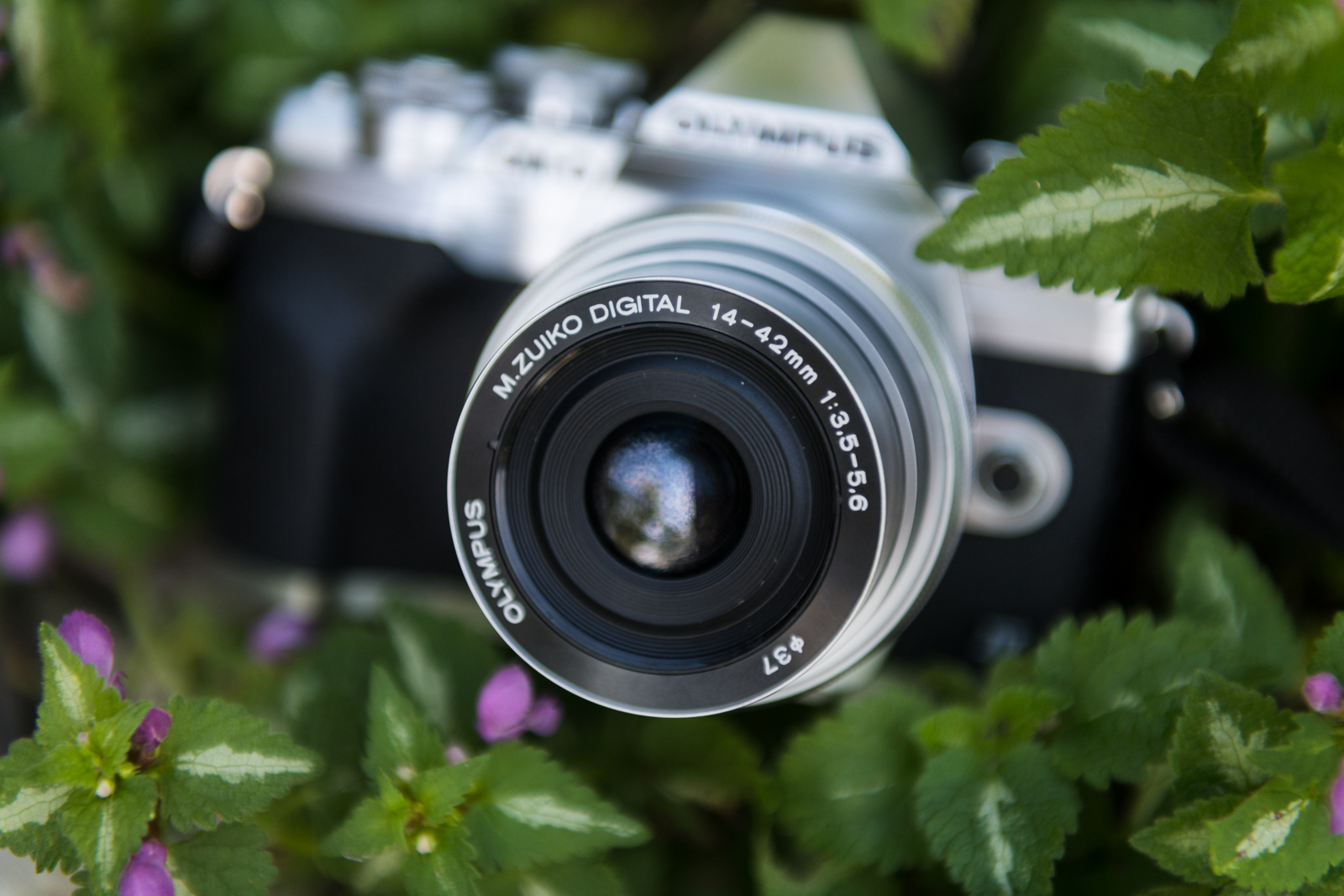“Borrowing features from Olympus' pricier models, the OM-D E-M10 Mark IV is a rare budget camera with stabilization.”
- In-body stabilization
- Compact, vintage design
- Good image quality
- Affordable
- Slower performance
- More noise than APS-C cameras
The Olympus OM-D E-M10 Mark IV is an entry-level camera that wears the hand-me-downs of its bigger siblings. The $800 camera and lens kit — $700 for just the body — borrows the eye detection algorithms of the E-M1 Mark III and a truncated five-axis image stabilization system, all paired with a sensor that’s only 0.1 megapixels shy of cameras that cost more than twice as much.
The E-M10 Mark IV alaunches as its parents consider a split. With Olympus in talks to sell its imaging division to Japan Industrial Partners, the future of the camera line — and the lenses and accessories — is uncertain. The company expects to reach an agreement at the end of September, but until then, the state of Olympus cameras is fraught with rumors and questions.
Like any hand-me-down, the E-M10 Mark IV’s features are a little rough around the edges. Are the cost savings for the more affordable OM-D camera worth it despite a few snags? I spent two weeks with the Olympus E-M10 Mark IV to see where the camera impresses and where it falls short.

Film-inspired compact design
The E-M10 Mark IV embodies what the mirrorless camera was originally heralded for: Compact size. Measuring less than 2 inches deep (and less than 3 inches with the kit lens retracted), the mirrorless is the ideal size between a point-and-shoot and most interchangeable lens cameras. Weighing roughly 20 ounces with the kit lens, it’s light enough to sling around your neck and almost forget that it’s there. Yet the body still holds enough real estate to offer a good selection of physical controls and a much more substantial grip than a slim compact camera. Perhaps in part because the last mirrorless I shot with was the DSLR-sized Canon EOS R6, the E-M10 Mark IV felt more like a point-and-shoot than what we expect out of a modern mirrorless camera.
Despite the lower price point, the E-M10 Mark IV is a gorgeous camera. The silver body with a textured black wrap, the silver dials, and the on/off switch make it look like a classic film winder. The body doesn’t feel as robust as a magnesium alloy build, but neither does it feel chintzy. Unfortunately, it lacks the excellent weather sealing of the high-end OM-D cameras. While I prefer slightly larger grips, the shape is easy enough for the index fingers to wrap around at the front, with a nice thumb rest at the back.
The body still leaves plenty of room for a 2.36-million-dot viewfinder and a 3-inch, 1.04-million-dot LCD screen that tilts 180 degrees, (Note: If you use a tripod, the full swing of that tilt would be blocked.) Similar to the experience on other recent Olympus cameras, both the viewfinder and LCD screen don’t always accurately portray what the camera is capturing. Several times, the white balance in the viewfinder was much different than what the actual photo captured. Exposure also didn’t always match up, and areas in shadow tend to be muted and difficult to make out from the viewfinder. Given that the M-10 IV is a budget camera, the viewfinder, despite its faults, met up with expectations compared to similarly priced cameras.
The E-M10 IV’s control scheme makes most of the frequently accessed settings easy to adjust. Dual control wheels adjust shutter speed and aperture, while shortcut buttons on the back open options for adjusting ISO, flash, and burst shooting. Settings like autofocus modes and white balance are inside a quick menu. I miss the joystick found on higher-end cameras, which allows you to adjust the focal point in one step — on the E-M10 IV, you tap the shortcut, then move the cursor. But, again, the joystick is a feature generally reserved for higher-priced cameras, so we can’t be too harsh on it not being present on the E-M10 IV.

The side of the camera houses a USB for recharging, as well as an HDMI port, while both the battery and single SD card slot share a door underneath. That battery door is just barely blocked by a standard-sized tripod plate, which can be a little annoying. While the battery is rated for 350 shots, I got about 650 shots before it wore down. It’s missing the ports of a more advanced camera, like a mic port for video, but has the pop-up flash that high-end cameras tend to omit.
The small size, classic look, and control scheme make the E-M10 Mark IV a blast to shoot with. While I miss the weather sealing, grip, and joystick of its pricier siblings like the E-M1 Mark III, the small size means I never had to second-guess whether I really wanted to haul the camera around with me all day.
Sluggish performance, excellent stabilization

Olympus advertises that the budget E-M10 IV uses some of the same autofocus algorithms as more expensive models, including the continuous autofocus subject detection of the E-M1X and the same Eye AF as the E-M1 Mark III. But, while the algorithms are there, the E-M10 has an entirely different autofocus system that cheapens the experience. The E-M10 IV uses a contrast-detection system, while the high-end OM-Ds use a hybrid phase-detection and contrast-detection system.
The E-M10 IV also uses the TruePic VIII processor, which is one generation behind the E-M1 Mark III. To put that even further in perspective, the E-M1X has two processors. Both the more limited type of autofocus system and slower processor mixed with high-end algorithms means that the M10 Mark IV is more accurate than it’s predecessor, the E-M10 Mark III, but doesn’t have the speed or reliability of either the E-M1 Mark III or the E-M1X.
The 121-point contrast-detection autofocus system is slightly better than what I expected from an $800 camera, though. It is accurate and easy to use, but lacks a bit of speed. I had very few shots that didn’t nail the focus, and many of those were because I shot a little too early. Autofocus slows down slightly in low light but still seemed to lock on accurately without too much of a delay.
Continuous autofocus was OK for a budget camera, getting more shots sharp than not, but still catching a handful of soft-focus images when shooting the fastest action. Unsurprisingly, tracking autofocus doesn’t work that great, but I have yet to meet a camera with tracking good enough to fully rely on, even among pricier models.
Eye AF is excellent for portraits and snapshots of people, as it easily picks up eyes and faces. It’s not quite fast enough to use on action, however. My favorite part about the Eye AF is that you don’t need to be in auto-area focus mode for it to work, a trait some other brands annoyingly reserve this feature for. Olympus allows you to toggle the feature on and off, so you can use it in more advanced focus modes rather than exclusively in the mode that wants to automatically select the subject for you.

The E-M10 IV can shoot at up to 8.7 frames per second (fps) with the mechanical shutter but needs the slower 5 fps speed in order to use continuous autofocus (or extended ISO settings). At the fastest speed, shooting RAW + JPEG, the camera can churn out 18 shots before the filling buffer starts to slow things down. Slowing the speed to 5 fps allows the camera to engage autofocus (which, let’s be honest, you’re going to want active) and take 21 shots in a row before slowing. Both bursts took around 15 seconds to be fully written to a Class 10 SD card before you could review the images in playback, but you could keep shooting at a slower rate or adjust settings while writing to the card.

One of the best features the E-M10 borrows from more advanced models — albeit, it’s not quite as good — is the 5-axis sensor-shift image stabilization. Rated to 4.5 stops, the system was good enough to shoot down to 1/10th of a second at 14mm handheld and still get some (but not all) shots sharp. I even took a handheld shot of the moon. While lagging behind the 7.5 stops of the E-M1 Mark III, the in-body optical image stabilization system this good is difficult to find on a budget camera.
Excellent image quality
Sporting almost the same pixel count as pricier models, Olympus didn’t skimp on the sensor for the E-M10. The 20.3 megapixel Micro Four Thirds sensor captures sharp images with good color. While the images may not look as good from the viewfinder and the camera is a bit slower, image quality is one feature that was not shortchanged to reach the budget price.
Images from the E-M10 IV and kit lens were well detailed. They were sharpest at f/5, but still acceptable shooting with the kit lens wide open. Mixed with the ability to shoot .23x magnification with the kit lens, the camera has the potential to capture a lot of detail. The compact kit lens does have a tendency to flare, however.

The smaller Micro Four Thirds sensor will suffer more from noise than an APS-C or full-frame camera, but is fairly well-controlled for the category. Slight noise appears in shadows at ISO 800. I would use up to ISO 3200 before worrying about a significant loss of detail and sharpness.
Colors coming straight from the camera are good. The E-M10 IV also adds a new instant film filter to the in-camera color profiles, and it’s one of my favorites for the punchy contrast and purple and red undertones. RAW files recover a respectable amount of detail from the shadows, with some slight recovery from the highlights.
Video is available at 4Kp30 and offers the same solid color and detail as the images. The image stabilization also helps boost video quality. The camera is difficult to recommend for vlogging or serious video work, however, because it lacks a mic port.
While the sensor on the E-M10 IV isn’t as good as a larger sensor, it competes with Olympus’ more advanced models and offers excellent quality for the camera’s small size and price.
Our take
As a budget model, the Olympus E-M10 Mark IV captures excellent images with a few sacrifices to performance, build quality, and controls. For the price, the E-M10 has a lot to offer, including excellent images, 4K video, a compact body, and image stabilization. Shooting with the E-M10 feels like grabbing a point-and-shoot camera, thanks to the small size and light weight. While using a mirrorless camera without multiple lenses shortchanges the camera’s capabilities, the tiny 3-ounce kit lens makes the E-M10 IV feel like a reasonable alternative to pricey point-and-shoots like the Sony RX100 series.
Of course, in order to slim that price down, Olympus made a few sacrifices. Its speed is a bit lacking, it won’t handle a rainstorm, and, even among the budget category, there are competing cameras with larger sensors.
Is there a better option?
The E-M10 Mark IV is a good budget camera, but it doesn’t have quite enough to make it the best budget mirrorless camera. The Sony a6100, which costs $750 with a kit lens, has a larger sensor, faster 11 fps, and a hybrid phase-detection and contrast-detection autofocus system. It lacks image stabilization, however, giving the E-M10 IV an edge for photographers frequently working in low light. Our current favorite budget mirrorless, the Fujifilm X-T30, offers better autofocus than the E-M10 Mark IV, a larger sensor, and more advanced video features, but again lacks stabilization and sells for about $200 more.
How long will it last?
Olympus is currently negotiating a deal to sell its imaging division, and the sale makes the future of Olympus lenses and accessories unclear. There’s a possibility of buying the E-M10 Mark IV and losing support down the road, in addition to limited lens availability. The build quality is good for a budget camera, but don’t expect the durability of its weather-sealed siblings.
Should you buy it?
Not if photography is a serious hobby, but it’s an easier sell for more casual shooters. The smaller sensor, slower speed, and questions on the company’s future makes this camera difficult to recommend for more discerning shutterbugs. The small size, low price, good image quality, and built-in image stabilization — a feature hard to find in an entry-level camera — are all great for the casual photographer, however.

